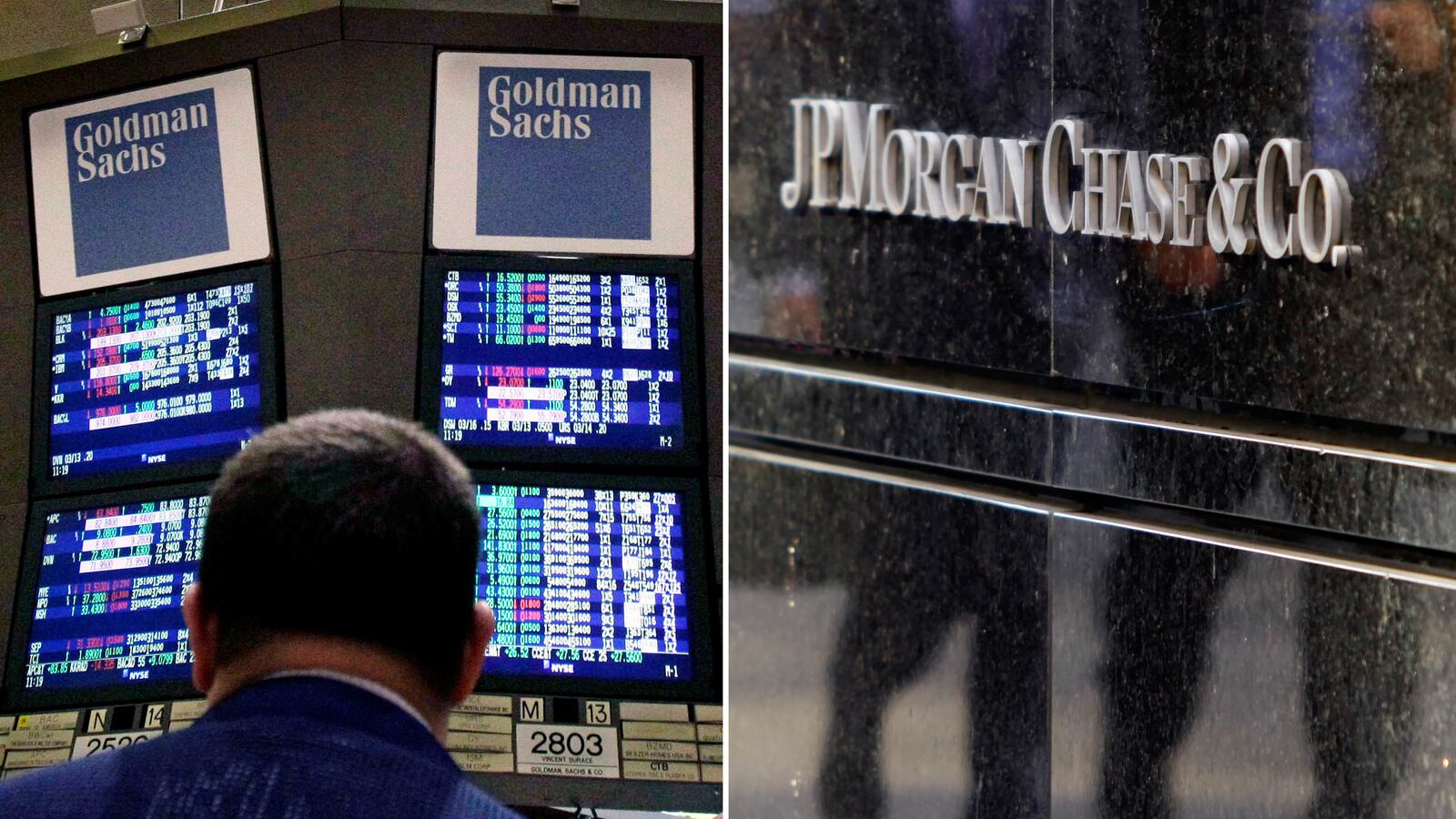The drumbeat of bad news from big banks continues. Morgan Stanley is paying bonuses in IOUs, huge banks agreed to nearly $20 billion in settlements, and Bank of America got out of the mortgage market right when the going got good. But reports Wednesday morning show that two banks did great this year, even if one of them suffered the most talked-about single trading loss since the financial crisis: JPMorgan Chase and Goldman Sachs.

JPMorgan reported that it took in $99.9 billion in revenue and $21.3 billion in net income in 2012; in the fourth quarter, it earned $5.7 billion in profits. In total JPMorgan’s 2012 revenue was 12 percent higher than the year before. Goldman Sachs, meanwhile, managed to embarrass analysts who undershot its revenue and profits with $34.16 billion and net income of $7.48 billion for the year; in the fourth quarter, Goldman earned $2.89 billion on $9.24 billion in revenues. Goldman’s annual profits rose 68 percent in 2012 from 2011.
The results show a combination of savvy and ability to profit from macroeconomic trends—especially the explosion in debt issuance because of low interest rates and the substantially improving housing market. Since Goldman and JPMorgan are not as weighed down from the regulatory and asset-sheet hangover from the financial crisis as other banks, they are primed to make huge amounts of money—even if attacked by an internal whale or by external regulators.
JPMorgan managed to notch its third straight year of record income despite perhaps enduring the most embarrassing loss in its history: $6.2 billion from a credit derivatives trade gone wrong. JPMorgan today aired out all its dirty laundry on the loss from the “London Whale,” revealing in a 129-page report that the loss could be blamed on a combination of honest mistakes, mismanagement, and overconfidence compounded by dishonesty in recording the size of the trade in the London-based Chief Investment Office.
JPMorgan also dinged the compensation of CEO Jamie Dimon, who will be taking home $11.5 million in 2012, half of his 2011 haul of $23 million.
A big chunk of Goldman’s increase in profits, on the other hand, came from getting a handle on expenses. Since 2011, Goldman has embarked on a $1.9 billion expense-cutting mission, which included cutting more than 3,000 jobs and trimming the number of partners. Noncompensation expenses actually fell 4 percent in 2012, while cash paid out to employees rose 6 percent to $12.94 billion.
Goldman’s revenue largely came from the investment bank’s wheelhouse: just under $5 billion from advising, stock underwriting, and debt underwriting; just over $18 billion in trading for clients; $5.9 billion in “investing and lending” which are Goldman’s own investments in stocks, debt, and private equity deals; and $5.2 billion in asset management. Of its $4.9 billion in investment-banking revenue, $1.9 billion came from issuing and underwriting debt. The debt underwriting revenue was the second-highest for the bank ever and the highest since 2007 and was due to “higher net revenue from investment grade and leveraged finance activity” Goldman said in a statement. Translation: companies are borrowing as much as they can because interest rates have never been lower and Goldman is happy to help.
JPMorgan notched its third straight year of record-setting profits, with $99.9 billion in revenue and $21.3 billion in net income; in the fourth quarter alone, net income (5.69 billion) went up 53 percent. “The firm’s results reflected strong underlying performance across virtually all our businesses for the fourth quarter and the full year, with strong lending and deposit growth,” Dimon said in a statement. The housing (or housing finance) recovery helped. The bank originated more than $180 billion in loans in 2012, a 24 percent jump from 2011.
Just as JPMorgan has been able to ride the increasing health of the housing sector to huge gains, so has it benefitted from the slightly better condition of the American consumer: total charge-offs for credit cards fell to $4.9 billion in 2012 from $6.9 billion in 2011. The portion of loans that were more than 30 days overdue fell from 2.32 percent to 1.87 percent. But this hasn’t made the loans themselves more profitable; just like its main competitor in the credit-card, personal, and mortgage-banking space, Wells Fargo, JPMorgan has seen its “net interest margin,” a measure of the profitability of its loans, fall—from 2.7 percent in 2011 to 2.4 percent in 2012.
Forget about trading, structured products, and exotic derivatives. When it comes to the basics of commercial and investment banking—making home loans, collecting interest payments, helping companies issue debt—policymakers and the recovering economy have essentially invited well-run banks to make oodles of money. Goldman and JPMorgan have accepted the invitation.






